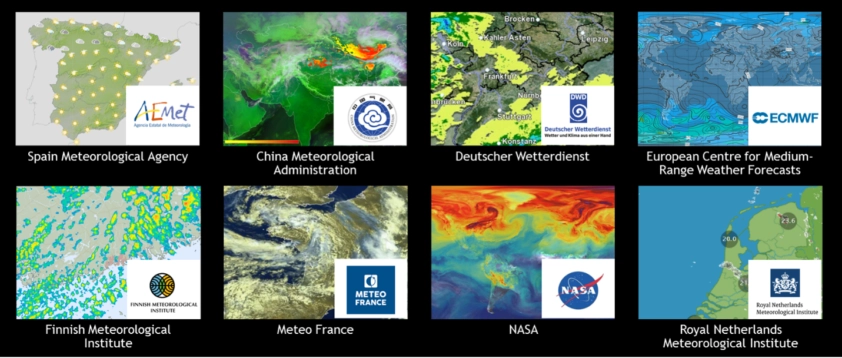The increased frequency and severity of extreme weather events are causing significant human and economic losses. According to the Munich Reinsurance Company, by 2050, these events could result in the loss of a million lives and cost $1.7 trillion annually. Accurate weather forecasting is crucial in mitigating these risks, especially with the rise of severe weather occurrences like blizzards, hurricanes, and heatwaves. Artificial intelligence (AI) and accelerated computing have the potential to revolutionize weather forecasting and address these challenges.
Currently, more than 180 weather modeling centers rely on high-performance computing (HPC) infrastructure to process traditional numerical weather prediction (NWP) models. For example, the European Center for Medium-Range Weather Forecasts (ECMWF) operates on a massive scale, utilizing hundreds of thousands of CPU cores. However, there is a growing need to rethink the design of HPC systems to improve energy efficiency.
Accelerated computing, which leverages the power of graphics processing units (GPUs), offers a promising and energy-efficient alternative for faster computations. GPUs, particularly those from NVIDIA, have already made a significant impact on globally adopted weather models. They enhance performance up to 24 times, improve energy efficiency, reduce costs, and require less space.
NVIDIA has developed an AI-based weather prediction model called FourCastNet, which combines AI algorithms with physics-based models. It delivers competitive accuracy with significantly greater speed and energy efficiency compared to traditional methods. FourCastNet can rapidly generate week-long forecasts and produce large ensembles, which are groups of models with slight variations in starting conditions, allowing for high-confidence predictions of extreme weather events.

For example, ForeCastNet accurately predicted the temperatures on July 5, 2018, in Ouargla, Algeria, which turned out to be Africa’s hottest recorded day. Using NVIDIA GPUs, ForeCastNet quickly generated 1,000 ensemble members, outperforming traditional models. Several of these members accurately predicted the high temperatures in Algeria, demonstrating the potential of AI for reliable weather forecasting with lower energy consumption.
FourCastNet leverages the latest AI advances, such as transformer models, to bridge the gap between AI and physics. It is about 45,000 times faster than traditional NWP models and consumes 12,000 times less energy to produce a forecast compared to the Europe-based Integrated Forecast System, a widely used NWP model.
This breakthrough in AI-powered weather forecasting opens up possibilities for various applications and can revolutionize the field of numerical weather prediction. By utilizing technologies like NVIDIA H100 Tensor Core GPUs and simplifying code, researchers can achieve faster simulations and advance climate research. The goal is to study climate effects up to 300 years into the future, which requires systems to be 20 times faster.
Scientists are currently exploring the optimal balance between physical modeling and machine learning to produce faster and more accurate climate forecasts. The integration of machine learning with accelerated computing has the potential to drive significant advancements in weather forecasting and climate science, leading to more efficient, reliable, and energy-conscious predictions.

